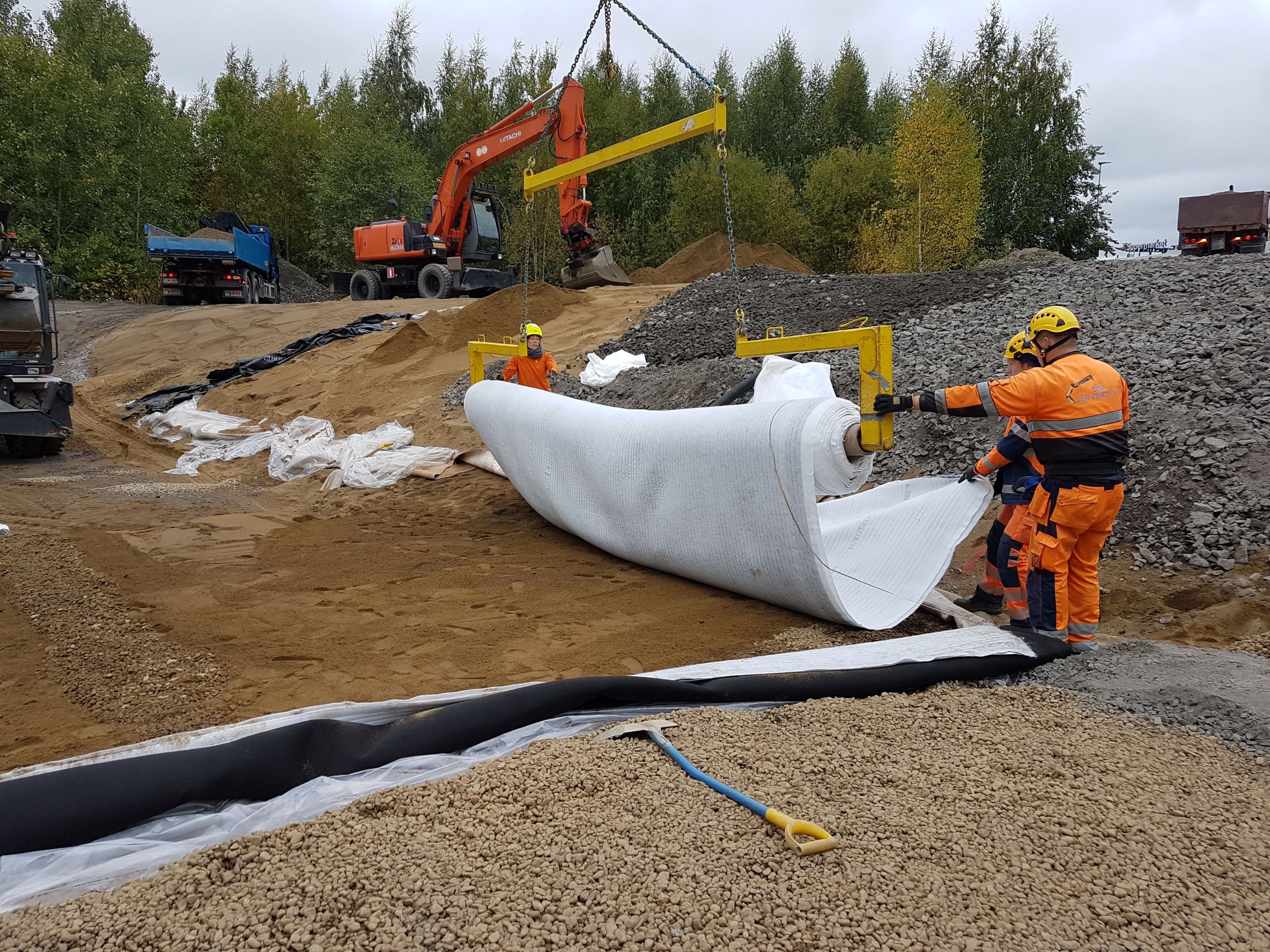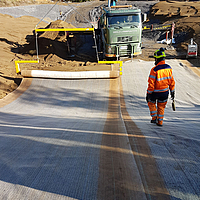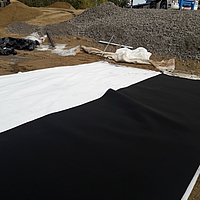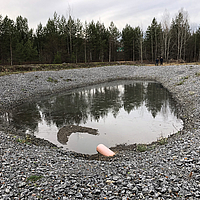Stormwater treatment
Project information
Tampere Storm water pond
Tampere, FI
SitoWise
Summer 2020
Project details
In the City of Tampere in the districts of Kaukajärvi and Haihara, north east from the crossing E63/Santaharjuntie there is a stormwater pond which collected water from the E63 and the surrounding roads. During ground water monitoring around the pond increased values of petroleum hydro-carbons and polycyclic aromatic hydrocarbons (PAH) have been noticed. The aim was to stop the influx of these contaminations into the groundwater.
During groundwater quality monitoring (2016–2018) increased values for hydrocarbons and PAH were noticed and the city of Tampere started to investigate possible sources of the contamination. The stormwater pond was identified as one potential source.The storage capacity of the pond is 500m3 and the estimated average concentration of contaminants per litre is: for hydrocarbons (mainly oil) ~ 1mg/l (0,1…3mg) and for PAH ~ 1µg/l (0…10 µg/l). The expected water volume arriving at the pond per year is 13.000 m3 and the water flow rate is 200l/s. The pond was filled with drainage gravel and on the bottom there was a nonwoven geotextile (N3).
The first idea was to filter out contaminants before entering the pond but it was impossible to identify the main influx location to the pond. Therefore the only remaining solution was to install an efficient filter system in the pond which will stop hydrocarbons and PAH to reach the groundwater. The decision was made to renew the whole pond and to improve the geotextile filter layer on the bottom. Slopes were sealed with a geosynthetic clay liner and the horizontal bottom of the pond (ca 100m2) was covered by two layers of an active geocomposite for groundwater protection and contaminated site remediation. In this project Tektoseal Active AS was installed on top in order to filter out hydrocarbons. It consists of two nonwoven layer and in-between an oil absorption agent is mechanically reinforced. This fabric reliably binds petrochemical products. The versatile geocomposite can be used in water, on water surfaces and on land.
Tektoseal Active AC was placed underneath the first layer for filtering out PAH. Activated carbon is the adsorbent between two layers of nonwoven geosynthetics. The geocomposite encapsulates pollutants already present in the environment and prevents a new contaminant migration at the potential source and the removal of contaminants from liquids or gases. In this project the two active geocomposites were used as a treatment train to remove all contaminants from the migrating water.
Both materials have a certain capacity for filtering out hydrocarbon and PAH. The estimated minimum functionality for the Tektoseal filter system is 30 years. In order to protect the nonwoven filter layer from UV radiation a sand/gravel drainage layer was installed on top of the geocomposite.
Tektoseal Active offers a cost effective in-situ treatment of pollutants compared to ex-situ methods. The selection of different sorption layers increases the application range. In our case the thickness of the polymer layer in Tektoseal Active AS and the amount and type of activated carbon in Tektoseal Active AC was adapted to the project’s needs. The material is easy to cut on site and can be easily removed after service period. Innovative environmental engineering made in Germany!



